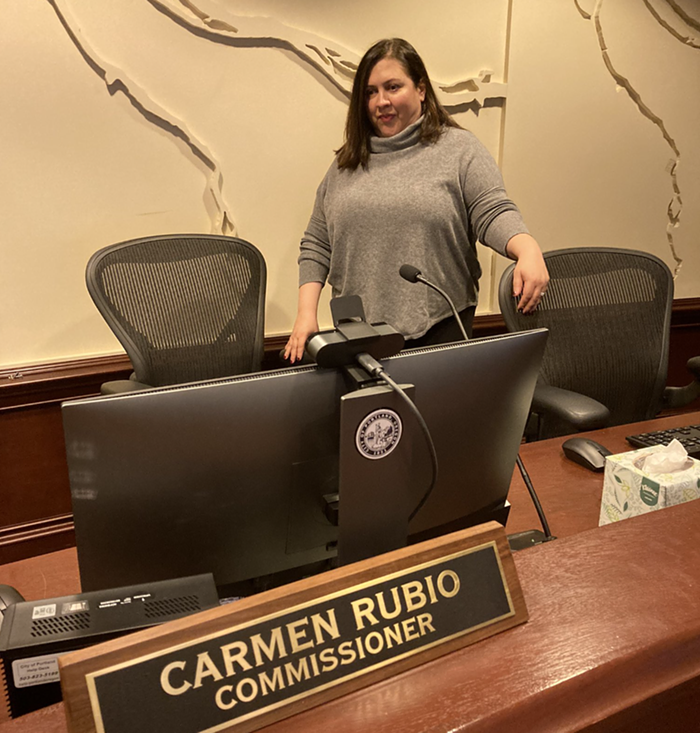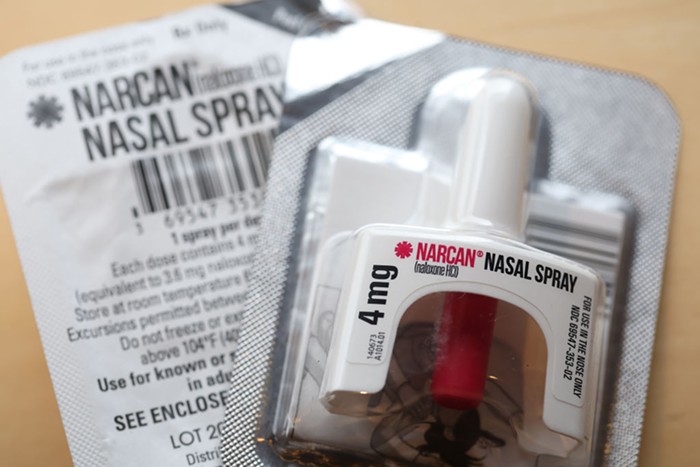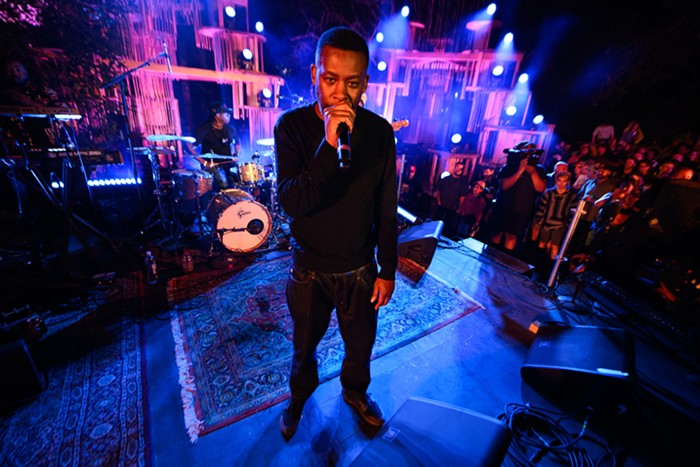TO BEGIN Alien She properly, you have to go back to school. Specifically, the sparkling Arlene and Harold Schnitzer Center for Art and Design building's 511 Gallery, part of the new Pacific Northwest College of Art campus. There you'll find enough music, zines, and ephemera documenting the '90s riot grrrl movement to immerse yourself in for days.
Walls are lined in the cannibalized clutter familiar to the cut/paste/copy era: Culled from a global network of institutional and personal archives, some of the zines and posters for concerts and rallies are under glass, while more notable contributions to the riot grrrl zine culture have been reproduced and are available for reading. Alongside the reading material is a table lined with iPods. Under glass at each docking station are more of the flyers, CD covers, setlists, and scribbled rants that serve as evidence of riot grrrl activity in various regions.
Each iPod's playlist is authoritatively curated: Mr. Lady Records' Tammy Rae Carland handles the American South; Team Dresch's Donna Dresch has the Pacific Northwest covered; Allison Wolfe of Bratmobile/Ladyfest speaks to Washington, DC, and Olympia; and Alien She curators Ceci Moss and Astria Suparak represent their native California. England, Belgium, the Netherlands, Brazil, and Canada are also on hand, and a nearby interactive map shows currently active riot grrrl chapters across the globe.
The connection to the present day is fundamental to the concept of Alien She, which documents a history as it's being lived. If you have a great deal of time on your hands, head to the Riot Grrrl Census (riotgrrrlcensus.tumblr.com) to read testimonial after testimonial. You'll find plenty of people waxing nostalgic about the zine they made at age 17 in the early '90s, but you'll also find people talking about how riot grrrl's influence continues to manifest itself in their lives, and younger responders who are just discovering and becoming inspired by the movement. The huge banner that hangs on the 511 Gallery's wall emblazoned with one of the riot grrrl manifestos still resonates, and the broader aim of the exhibit is to track the continuation of feminist activism in the work of seven artists in the prime of their careers.
The 511 houses two of these: Tammy Rae Carland (of Bikini Kill's "For Tammy Rae"), whose Lesbian Beds and I'm Dying Up Here photo series explore intersections of the personal and political as well as the feminine in the context of public performance; and a selection of Ginger Brooks Takahashi's work, including "Feminist Body Pillow" (you'll be tempted to use the pile of political T-shirted bed pillows as your zine-reading nest, but don't).
Follow the installation trail a few blocks south to the Museum of Contemporary Craft and you'll find Alien She's larger-scale, craft-oriented pieces, like L.J. Roberts' massive pink yarn-covered barbed wire fence and the gigantic, genius Ladies Sasquatch sculptures of Allyson Mitchell, which depict female sexuality in hairy, feral glory.
The collaboratively social and film-oriented work of Miranda July lives in the upstairs gallery, along with Stephanie Syjuco's Counterfeit Crochet project—a pattern book and yarn await your own idle hands to add to the series of designer bag knock-offs—and an overview of Faythe Levine's work with alternative communities and the socioeconomic role of crafting.
As tactile, subversive, and academic as riot grrrl's roots, Alien She offers something different for each user, a cocktail of nostalgia, energizing history, and appreciation for the continued relevance of a movement not ready to be relegated to the annals. Increasingly embraced by outsider communities along racial, economic, sexuality, and gender-defined roles, Alien She captures a movement still running its course.













